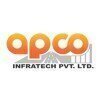
i
Aarvee Associates
Filter interviews by
Aarvee Associates Structural Design Engineer Interview Questions and Answers
Aarvee Associates Structural Design Engineer Interview Experiences
1 interview found
I applied via Approached by Company and was interviewed before Nov 2020. There were 4 interview rounds.
Interview Questionnaire
2 Questions
- Q1. Personal inetrview about ourself
- Ans.
I am a detail-oriented and driven individual with a passion for structural design engineering.
I have a Bachelor's degree in Civil Engineering and a Master's degree in Structural Engineering.
I have experience working with various software programs such as AutoCAD, Revit, and SAP2000.
I am skilled in analyzing and designing structures such as buildings, bridges, and tunnels.
I am a team player and enjoy collaborating with ...
- Q2. Technical interview as from coral parameters
Interview Preparation Tips
Top trending discussions






Interview questions from similar companies

(2 Questions)
- Q1. How do you calculate the amount of material used in cubic meters?
- Q2. Water absorpation related

Senior Structural Engineer Interview Questions & Answers
Apco Infratechposted on 18 May 2024
I applied via Naukri.com and was interviewed in Apr 2024. There was 1 interview round.
(5 Questions)
- Q1. What is favourable zone in RCC
- Ans.
Favourable zone in RCC refers to the region of a reinforced concrete member where the concrete is in compression and the steel is in tension.
Favourable zone is the area where the concrete is able to resist compressive forces effectively.
It is typically located at the top of a beam or slab, where the bending moment is highest.
In this zone, the steel reinforcement helps to resist tensile forces, while the concrete resist...
- Q2. What is lap length
- Ans.
Lap length is the length of overlap between two reinforcing bars in a concrete structure to ensure proper transfer of loads.
Lap length is important for ensuring the continuity of reinforcement in concrete structures.
It is typically specified in building codes and design standards.
The lap length required depends on factors such as the diameter of the bars, concrete strength, and design loads.
For example, in a beam, the ...
- Q3. Type of lapping in reinforcement
- Ans.
Lapping in reinforcement involves overlapping two reinforcement bars to ensure continuity and strength in the structure.
Lapping is commonly used in construction to connect two reinforcement bars together.
The length of the lap varies depending on the design requirements and the type of reinforcement used.
Proper lapping ensures that the load is transferred effectively between the bars.
Examples of lapping include lap spli
- Q4. Role of bearing in bridges
- Ans.
Bearings in bridges help distribute loads and allow for movement due to temperature changes and settlement.
Bearings help distribute the loads from the superstructure to the substructure of the bridge.
They allow for movement of the bridge deck due to temperature changes, wind forces, and settlement of the foundation.
Bearings help reduce stress on the bridge components and prevent damage.
Common types of bearings used in ...
- Q5. Types of expansion joint
- Ans.
Types of expansion joints include slip joints, bellows joints, and modular joints.
Slip joints allow for movement in one direction only
Bellows joints accommodate movement in multiple directions
Modular joints are made up of separate components that can be replaced individually

(1 Question)
- Q1. Do you have experience with basements and below ground structures
- Ans.
Yes, I have extensive experience with basements and below ground structures.
I have designed and analyzed numerous basements for residential and commercial buildings.
I am familiar with waterproofing techniques and soil mechanics related to below ground structures.
I have experience with retaining walls, foundations, and underground parking structures.
I have worked on projects involving deep excavations and shoring system...

I applied via Walk-in and was interviewed in Aug 2023. There was 1 interview round.
(5 Questions)
- Q1. Design of one way slab
- Ans.
One way slab is a type of reinforced concrete slab where the main reinforcement is provided in only one direction.
Main reinforcement is provided in the shorter span direction
Distribution bars are provided in the longer span direction
Commonly used in buildings with rectangular floor plans
- Q2. Difference between short column and long column
- Ans.
Short columns fail due to crushing of material, while long columns fail due to buckling.
Short columns have a slenderness ratio less than a certain critical value, while long columns have a slenderness ratio greater than that value.
Short columns are more likely to fail in compression, while long columns are more likely to fail in buckling.
Examples of short columns include columns in buildings, while examples of long col
- Q3. Design of two way slab
- Ans.
Two way slab is a type of reinforced concrete slab that is supported by beams in both directions.
Two way slab is designed to carry loads in both directions, typically used in buildings with square or rectangular floor plans.
The design of two way slab involves determining the thickness, reinforcement layout, and spacing of bars to ensure structural integrity.
The slab is supported by beams on all four sides, allowing for...
- Q4. Design of staircase
- Ans.
Designing a staircase involves considering factors such as building codes, safety regulations, space constraints, and aesthetic appeal.
Consider the height and width of each step to ensure comfortable and safe use.
Calculate the rise and run of the staircase to determine the number of steps needed.
Choose a suitable material for the staircase based on the design requirements and budget.
Ensure proper handrails and guardrai...
- Q5. Wind load calculations
Interview Preparation Tips

Senior Structural Engineer Interview Questions & Answers
Tata Projectsposted on 4 May 2022
I applied via Walk-in and was interviewed in Apr 2022. There were 3 interview rounds.

(4 Questions)
- Q1. Any Structure related work
- Q2. Bridge ,rob rub,fob mib,mib
- Q3. Any questions regarding Major structure
- Q4. Civil engineering related
Interview Preparation Tips

Structural Engineer Interview Questions & Answers
Afcons Infrastructureposted on 22 Jul 2017
Interview Preparation Tips
Experience: This round is all over cleared
Tips: It's depends on your skills and talks to Hr team
Round: Resume Shortlist
Experience: Its round only for ask a technical question
Tips: It's round face to your work experience

(2 Questions)
- Q1. What is dual case in finding R value in EQ
- Ans.
Dual case in finding R value in EQ refers to considering both the worst-case scenario and the best-case scenario.
Dual case involves analyzing the structure's response to both maximum and minimum loads.
It helps in determining the range of possible outcomes for the structure.
For example, in seismic design, dual case analysis considers both the maximum and minimum seismic forces that the structure may experience.
- Q2. Why you are shifting your job
Interview Preparation Tips

Junior Structural Engineer Interview Questions & Answers
Apco Infratechposted on 7 Dec 2023
I applied via Referral and was interviewed in Nov 2023. There were 3 interview rounds.

(3 Questions)
- Q1. Q-What is toe & heel ? Ans - toe & heel retaining wall ka part h .eirth portion heel hota h aur noneirth portion toe hota h Q- box culvert ka drawing ban kar dikhaye? Aur kaise install Kiya jata h . Ans - ...
- Ans.
Toe and heel are parts of a retaining wall. Toe refers to the non-earth portion while heel refers to the earth portion.
Toe and heel are terms used in the context of retaining walls.
Toe refers to the non-earth portion of the wall.
Heel refers to the earth portion of the wall.
Toe provides stability and prevents sliding of the wall.
Heel provides support and resists the pressure exerted by the earth.
Toe and heel are importa...
- Q2. Q- how many types of concrete ? Ans - M5 M7.5 M10 M15 M20 M25 M30 M35 M40 M45 M50
- Ans.
There are various types of concrete used in construction, each with different strength and durability characteristics.
Concrete is classified based on its compressive strength, measured in megapascals (MPa).
Common types of concrete include M5, M7.5, M10, M15, M20, M25, M30, M35, M40, M45, and M50.
The number after 'M' represents the compressive strength of the concrete in MPa.
For example, M20 concrete has a compressive s...
- Q3. Q-How much load can 1 Kuplak pipe take? Ans - 4 Ton ka load le sakta h
- Ans.
A Kuplak pipe can withstand a load of 4 tons.
The load-bearing capacity of a Kuplak pipe is 4 tons.
This information is specific to Kuplak pipes and may vary for other types of pipes.
It is important to consider the weight distribution and other factors when determining the load capacity of a pipe.
Example: A Kuplak pipe can support the weight of a small car or heavy machinery.
(3 Questions)
- Q1. Kitni salary mili thi last company me
- Q2. Sir 15000 milta tha
- Q3. Tumhe asansol bhejta hu kar loge n
- Ans. Yes sir . deffenetly kar lunga .

I applied via Company Website and was interviewed before Nov 2023. There was 1 interview round.
(2 Questions)
- Q1. SFD & BMD Diagrams,
- Q2. Questions about wind & seismic analysis
Interview Preparation Tips
Aarvee Associates Interview FAQs
Tell us how to improve this page.
Aarvee Associates Interviews By Designations
- Aarvee Associates Assistant Manager Interview Questions
- Aarvee Associates Site Engineer Interview Questions
- Aarvee Associates Design Engineer Interview Questions
- Aarvee Associates Field Engineer Interview Questions
- Aarvee Associates Accountant Interview Questions
- Aarvee Associates Civil Engineer-Highway/Roadway Interview Questions
- Aarvee Associates Manager Interview Questions
- Aarvee Associates Aqme Interview Questions
- Show more
Interview Questions for Popular Designations
- Structural Engineer Interview Questions
- Civil Structural Engineer Interview Questions
- Senior Structural Engineer Interview Questions
- Junior Structural Engineer Interview Questions
- Senior Structural Design Engineer Interview Questions
- Civil Structural Designer Interview Questions
- Structural Steel Detailer Interview Questions
- Structural Draftsman Interview Questions
- Show more
Interview Questions from Similar Companies
Fast track your campus placements
|
Assistant Manager
217
salaries
| ₹3 L/yr - ₹10.9 L/yr |
|
Manager
124
salaries
| ₹6.5 L/yr - ₹19 L/yr |
|
Field Engineer
124
salaries
| ₹1.5 L/yr - ₹4.2 L/yr |
|
Site Engineer
93
salaries
| ₹2.4 L/yr - ₹6.8 L/yr |
|
Civil Engineer
76
salaries
| ₹2.2 L/yr - ₹7.8 L/yr |

Megha Engineering & Infrastructures

Larsen & Toubro Limited

Tata Projects

Hindustan Construction Company
- Home >
- Interviews >
- Aarvee Associates Interview Questions >
- Aarvee Associates Structural Design Engineer Interview Questions












